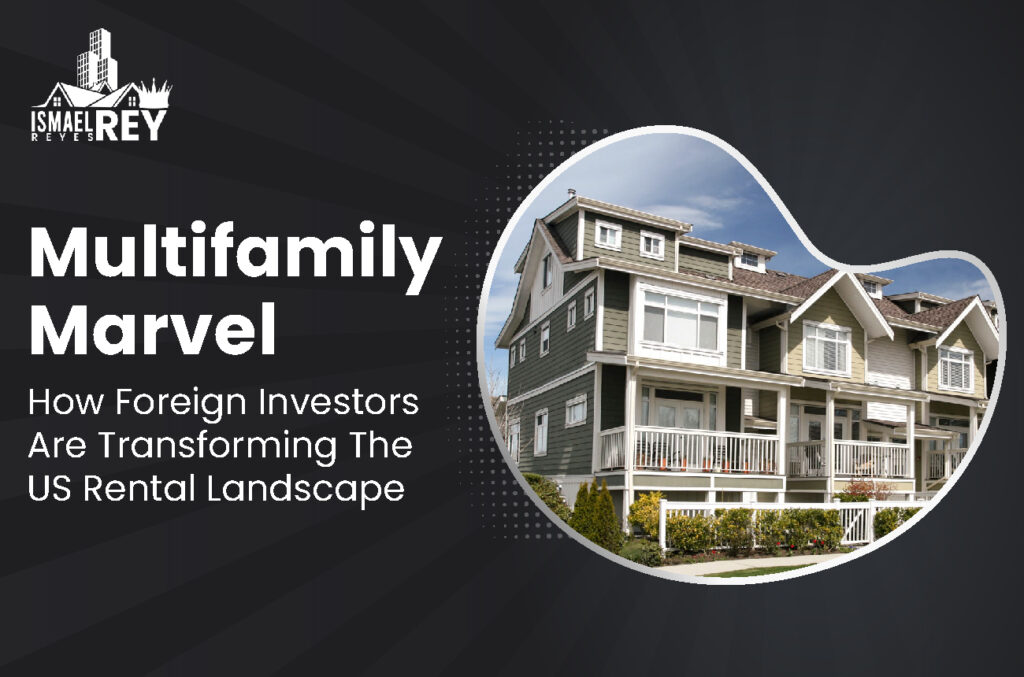Multifamily Marvel: How Foreign Investors Are Transforming the US Rental Landscape

The US rental landscape has undergone a significant transformation in recent years, thanks to the influx of foreign investors. This transformation has not only reshaped the multifamily real estate market but also had a profound impact on renters, landlords, and local communities. In this article, we will delve into how foreign investors have become key players in the multifamily housing sector, exploring the challenges and benefits they bring.
Understanding the Multifamily Real Estate Boom
The multifamily real estate market in the US has experienced a boom, primarily fueled by the demand for rental properties. Factors such as changing lifestyles, economic mobility, and urbanization have increased the need for rental housing. Recognizing this demand, foreign investors have seized the opportunity to invest in multifamily properties across the country.
The Role of Foreign Investors
Foreign investors play a pivotal role in this transformation. They bring substantial capital, innovative ideas, and a global perspective. These investors have invested in existing properties and have been involved in developing new, state-of-the-art multifamily complexes. Their investments have led to modern, high-quality housing options for renters.
Benefits for Renters
One of the significant benefits of foreign investment in the multifamily sector is the improved quality of rental properties. Renters now have access to well-maintained, technologically advanced, and energy-efficient housing. Additionally, the increased competition among property owners, including foreign investors, has led to competitive rental prices, offering renters more affordable options.
Challenges Faced by Local Landlords
While foreign investments have brought numerous benefits, local landlords have faced challenges. The competition from multinational corporations and wealthy foreign investors has made it harder for local landlords to acquire and retain tenants. Additionally, the rising property values, driven by foreign investments, have increased property taxes, affecting the overall operational costs for local landlords.
Impact on Local Communities
The impact of foreign investors on local communities is a topic of debate. On one hand, these investments have led to economic growth, job creation, and infrastructural development. On the other hand, there are concerns about gentrification and the displacement of low-income residents due to rising property prices. Striking a balance between economic growth and social equity remains challenging for policymakers.
Conclusion
In conclusion, the multifamily real estate market in the US has witnessed a remarkable transformation due to the involvement of foreign investors. While their investments have improved housing options and economic growth, challenges such as increased competition for local landlords and social inequality must be addressed. The future of the US rental landscape lies in finding sustainable solutions that benefit investors and local communities
Frequently Asked Questions
Q1: How have foreign investors contributed to developing multifamily properties in the US?
Foreign investors have contributed significantly by infusing capital into the market, leading to the construction of modern, high-quality multifamily complexes across the country. Their investments have raised the standard of rental properties.
Q2: Are there any downsides to the involvement of foreign investors in the US rental market?
While their investments have brought benefits, challenges such as increased competition for local landlords and concerns about gentrification and social inequality have arisen. These issues need to be carefully addressed.
Q3: How have rental prices been affected by the involvement of foreign investors?
The increased competition among property owners, including foreign investors, has led to more competitive rental prices. Renters now have access to a broader range of affordable housing options.
Q4: What measures are being taken to address local landlords’ challenges?
Policymakers are exploring various options, such as tax incentives and support programs, to assist local landlords in facing the challenges posed by increased competition and rising property taxes.
Q5: What is the future outlook for the US rental landscape with the continued involvement of foreign investors?
The future of the US rental landscape relies on balancing economic development and social equity. Policymakers, investors, and communities must collaborate to create sustainable solutions that benefit everyone involved.
About Ismael Reyes :-
Ismael Rey Reyes, is passionate about helping you achieve financial freedom through the power of passive income from multifamily real estate investments. With experience in multifamily acquisitions and capital raising, Rey has dedicated himself to multifamily investing full-time since 2016. Under his leadership, MI Real Estate has successfully invested in more than 15 multifamily properties in Alabama, Florida, Georgia, Texas, and Tennessee, with a combined portfolio of over 1200+ units valued at over $150 million. Join Rey to forge your path to financial prosperity.
Schedule A One Time Free 20 Mins Strategy Call with Ismael “Rey” Reyes.
Private consultation times available at: https://ismaelreyreyes.com/one-on-one-strategy-call/

